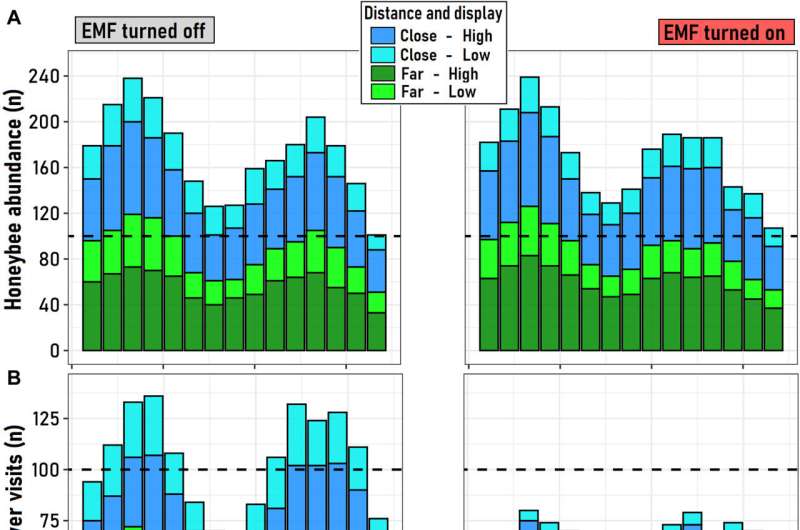


 Electromagnetic Fields from Cellphone and Electrical Towers Disrupt Pollinating Honeybees, Alarming Study Finds
Electromagnetic Fields from Cellphone and Electrical Towers Disrupt Pollinating Honeybees, Alarming Study Finds
In a groundbreaking study shedding light on the hidden impact of modern infrastructure on vital ecosystems, a team of biologists and ecologists hailing from Chile and Argentina have uncovered compelling evidence that electromagnetic fields produced by electrical towers significantly disrupt honeybee pollination.
The startling findings of this research, detailed in the esteemed journal Science Advances, underscore the potential repercussions of electromagnetic radiation on these crucial insect pollinators.
While previous research has hinted at the potential influence of electromagnetic radiation emitted by power lines on nearby plants and animals, an intriguing debate has arisen about the potential natural benefits these fields might offer within treeless regions that intersect with forests.
However, this fresh investigation focused squarely on the effects of electromagnetic radiation from electrical towers on honeybees, a choice motivated by earlier studies revealing these insects’ reliance on natural electromagnetic fields for navigation.
In a bid to meticulously examine the relationship between electromagnetic fields and honeybee behavior, the research team deliberately selected electrical towers rather than power lines themselves.
This strategic choice enabled them to compare honeybee activities around active towers to those around inactive ones, providing critical insights into the potential impacts of electromagnetic radiation.
The researchers embarked on their journey by conducting a comprehensive survey of poppy flowers in the vicinity of both active and inactive towers.
Startlingly, their observations unveiled a significant discrepancy in the number of blooming poppies around active towers, suggesting a potential link between electromagnetic fields and plant health.
Concurrently, the team meticulously measured the intensity of electromagnetic fields emanating from various cellphone and power towers at varying distances, offering a nuanced understanding of the radiation’s reach.
The research advanced as the team captured honeybee specimens situated at different distances from an active tower, probing the levels of a stress-related protein called HsP70 in their bodies.

Unsurprisingly, their analysis revealed elevated levels of this protein in bees operating in closer proximity to the electrical towers, hinting at potential stressors linked to the electromagnetic fields.
With these preliminary insights in hand, the researchers transported additional honeybee specimens back to their laboratory for more in-depth analysis.
Here, they meticulously examined the bees’ responses to varying levels of electromagnetic radiation exposure, delving into the expression of 14 genes intricately connected to navigation, stress, and immune functions.
Astonishingly, deviations in gene expression were evident in 12 of the targeted genes within bees exposed to electromagnetic radiation.
The culmination of their research took the team back into the field for one final investigation.
Examining honeybees working in close proximity to electrical towers, they discerned a remarkable revelation: the frequency of visits to the nearest flowers situated near towers plummeted by an astonishing 308% compared to flower-rich zones untouched by these structures.
In light of their comprehensive study, the research collective has issued a stark warning: electromagnetic fields encircling electrical towers possess a detrimental influence on honeybee pollination, with far-reaching implications for the broader plant ecosystem.
This alarming revelation really underscores the urgency of further research and thoughtful consideration of the environmental impact of modern infrastructure on our delicate natural world.
Because if it’s doing this to plants and animals, what is it doing to US?
Read the original story here:
Phys.org





